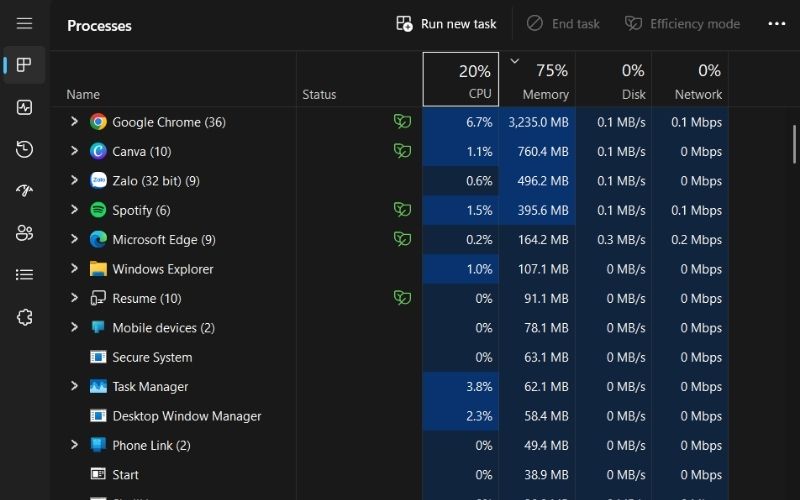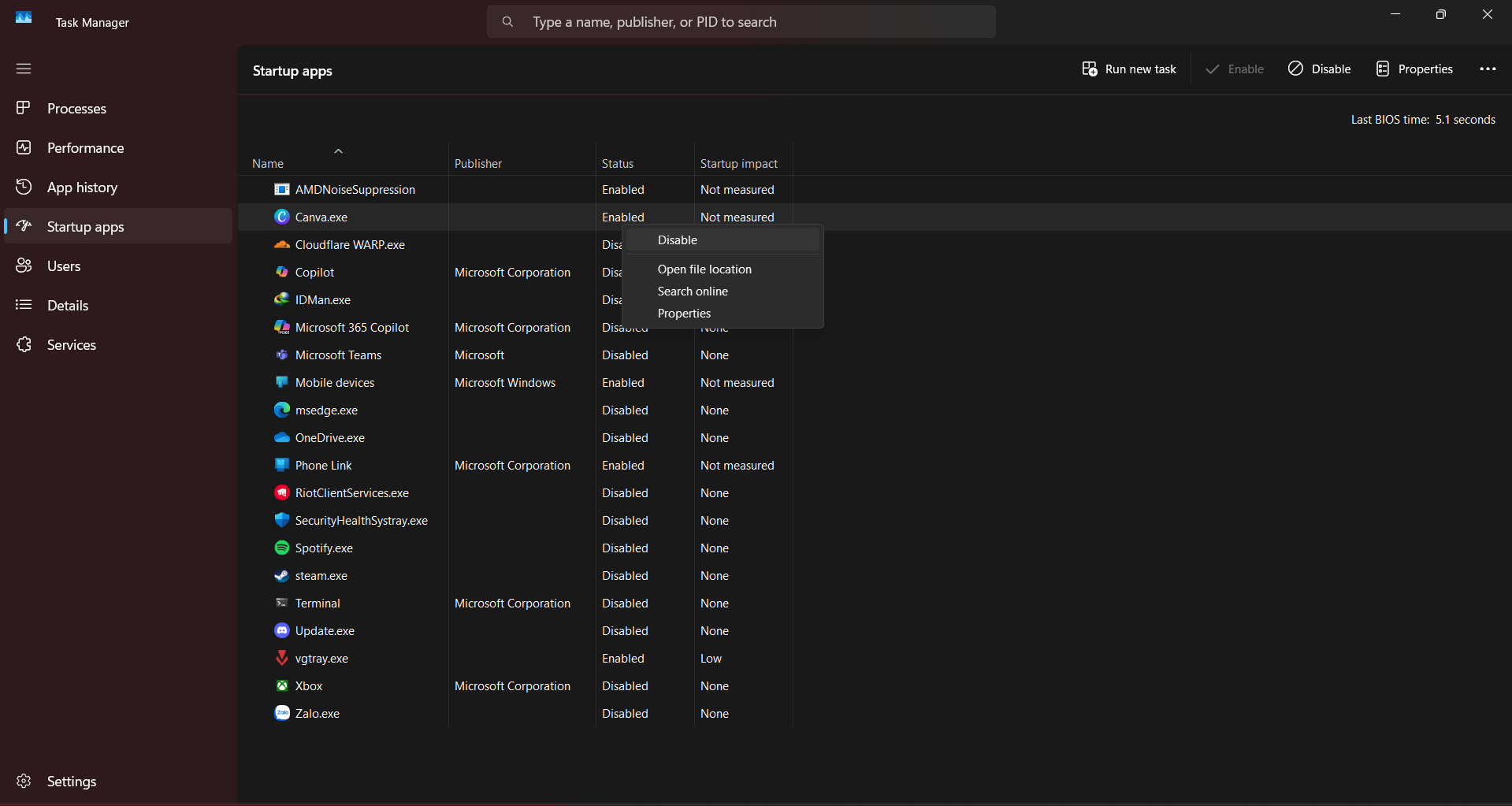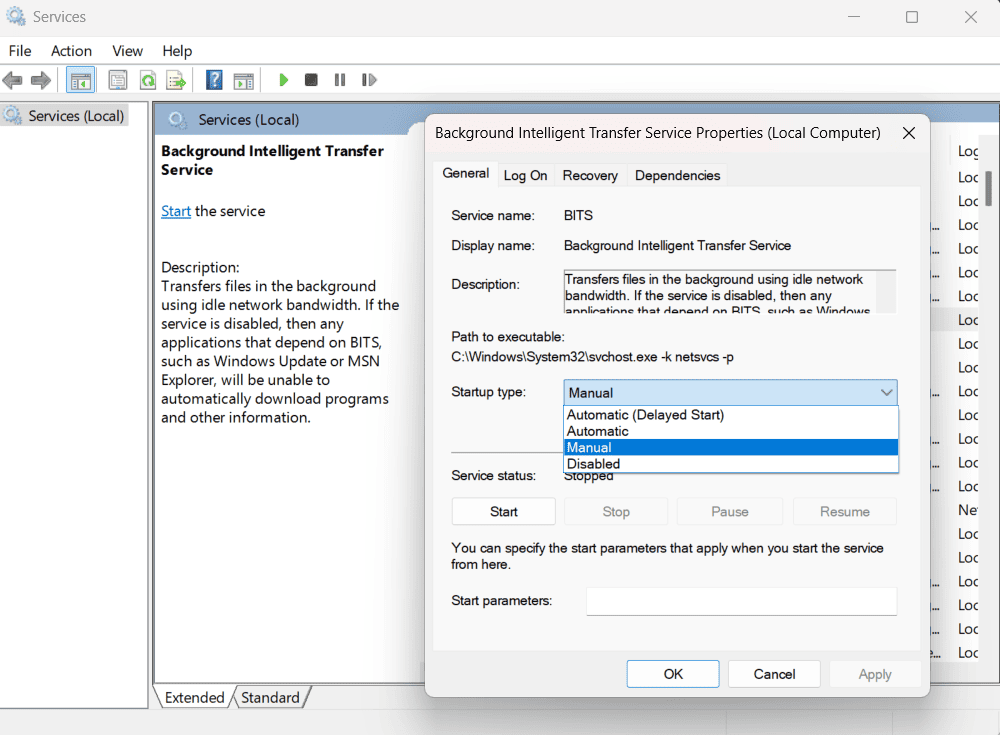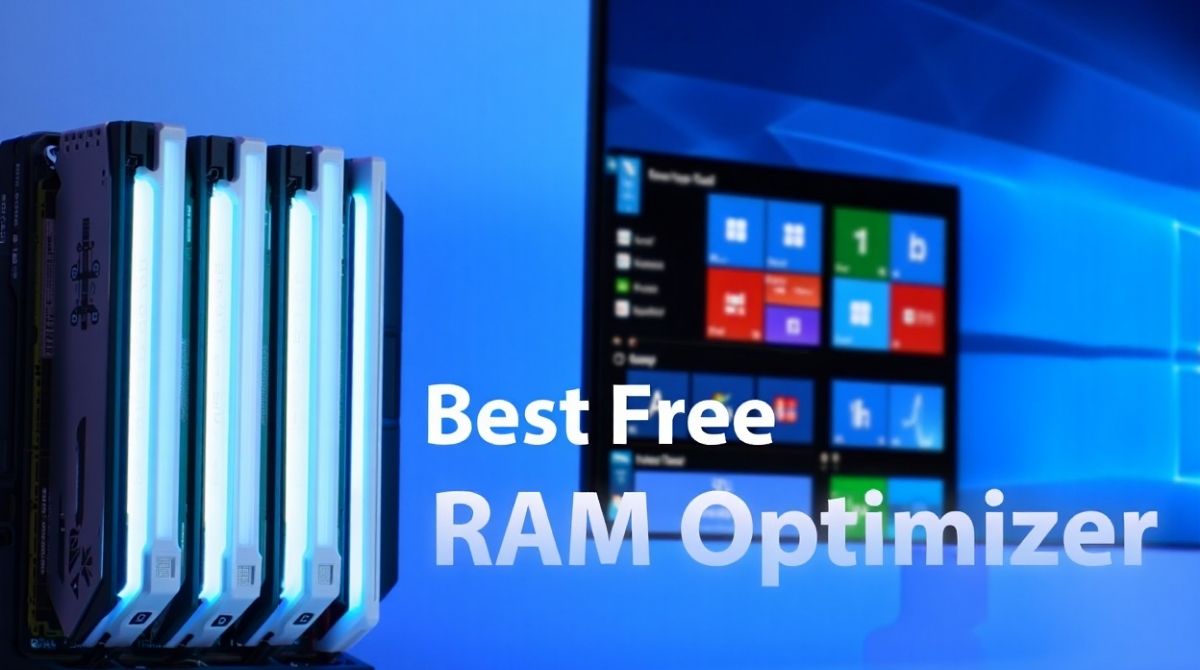Are you looking for the best free RAM optimizer for Windows 10 to fix slow performance, reduce gaming lag, and boost your PC’s speed in 2025? With Windows 10 still dominating many desktops, optimizing RAM has become essential—especially for users with older PCs or limited memory.
As a tech specialist who has tested multiple RAM tools, I’ve compiled the safest and most effective free optimizers to help you reclaim memory, improve performance, and keep your system stable. This guide also covers manual methods for freeing RAM without extra software, so you can make the smartest choice for your computer.
In this guide, you’ll learn:
- What RAM optimization is and why it matters in 2025.
- Who benefits most from RAM optimizers on Windows 10.
- The top trusted tools for safe memory optimization.
- Practical tips and manual techniques to free RAM effectively.
Do You Need a RAM Optimizer for Windows 10?
Windows 10 comes with an intelligent memory management system that automatically allocates RAM based on app priority and system requirements. For most users, this built-in feature works efficiently without manual intervention. However, there are situations where even the best free RAM optimizer for Windows 10 can make a noticeable difference—especially for:
- Heavy multitasking users who run multiple apps at once.
- Gamers experiencing frame drops or stuttering.
- Older PCs with limited RAM capacity.
According to Microsoft documentation and analysis from PCWorld, RAM optimizers are not “magic speed boosters.” Instead, they should be viewed as situational tools that can deliver measurable benefits under the right conditions.

Common Myths vs. Facts About RAM Optimizers
| Myth | Fact |
|---|---|
| “RAM optimizers always make your PC faster.” | Windows already manages memory efficiently. Optimizers help only in specific cases. |
| “More free RAM equals better performance.” | Cached memory improves speed by storing frequently used data; some “used RAM” is beneficial. |
| “All RAM optimizers are safe and effective.” | Many contain adware or unnecessary features—choose tools carefully. |
Expert Insight:
“A good RAM optimizer can help older PCs or low-memory systems, but it’s no substitute for understanding how Windows manages memory.” — Tech Analyst, 2025.
Key Takeaway
While Windows 10 handles memory well for most users, free RAM optimizers can be helpful when your system faces resource bottlenecks or lag. Understanding these limitations allows you to evaluate tools critically and avoid falling for unrealistic claims.
What to Look for in the Best Free RAM Optimizer for Windows 10
Choosing the best free RAM optimizer for Windows 10 means focusing on safety, real performance, and compatibility.
First, trustworthiness is critical—select tools without malware, adware, or bundled software. Next, verify real performance impact through user feedback and benchmarks; avoid programs that only display inflated “freed RAM” numbers without measurable results.
Compatibility with both Windows 10 and Windows 11 is also important for long-term use. Transparency matters too: open-source tools often provide the clearest insight into how they work. Finally, the optimizer should be intuitive and lightweight, ensuring it doesn’t create additional system strain.
Checklist for Selecting a RAM Optimizer
- No bundled adware or upsells
- Regular updates and active developer support
- Clear, user-friendly interface
- Low CPU and resource usage
- Open-source or from a reputable developer
Be cautious: Fake RAM optimizers and malware-laden cleaners are still common. Always review recent user feedback, feature comparisons, and screenshots before installing.
By following these criteria, you’ll be prepared to choose a safe and effective RAM optimizer in the next section.
Best Free RAM Optimizer for Windows 10 [2025 Review & Comparison]
The following comparison table highlights the best free RAM optimizers for Windows 10 in 2025, based on safety, performance, and ease of use. These tools vary in features and resource consumption, but all have been tested and verified as effective and secure.
| Tool Name | Effectiveness | Main Features | Win 10/11 Support | Open Source | Ads/Bundleware | Last Update |
|---|---|---|---|---|---|---|
| Wise Memory Optimizer | High | One-click optimization, auto mode | Yes | No | No | 2025 |
| Mem Reduct | Moderate | Real-time monitoring, lightweight | Yes | Yes | No | 2024 |
| CleanMem | Moderate | Scheduled optimization, silent mode | Yes | No | No | 2023 |
| Windows Memory Cleaner | High | Open source, simple UI | Yes | Yes | No | 2024 |
| RAMMap (Sysinternals) | Expert | Advanced RAM analysis, manual cleanup | Yes | No | No | 2025 |
Wise Memory Optimizer
Wise Memory Optimizer offers a simple interface and automatic memory optimization. It quickly releases memory occupied by unnecessary background processes and runs without intrusive ads or bundled software.
- Pros: Easy to use, automatic mode, lightweight, ad-free.
- Cons: Closed-source; limited advanced features.
Expert Insight: Ideal for casual users and gamers who need a quick, safe memory boost.
Mem Reduct
Mem Reduct is an open-source RAM cleaner that provides real-time memory usage monitoring and manual RAM freeing. Its transparency and minimal CPU usage make it a favorite for privacy-conscious users.
- Pros: Open source, lightweight, accurate stats.
- Cons: No automated scheduling; basic UI.
CleanMem
CleanMem uses Windows APIs to safely clean memory without force-closing processes. Its scheduled cleanup feature is perfect for users who prefer a “set-and-forget” solution.
- Pros: Minimal intrusion, stable, automated scheduling.
- Cons: Lacks real-time monitoring; less control for advanced users.
Windows Memory Cleaner (Open Source)
This tool offers a transparent, ad-free experience for manual memory cleaning. Its simple UI makes it ideal for users who want privacy and direct control without unnecessary extras.
- Pros: Open source, no ads, privacy-focused.
- Cons: Manual use only; limited features.
RAMMap (Sysinternals)
Developed by Microsoft, RAMMap is a professional-grade memory analysis tool. It doesn’t automate optimization but allows detailed inspection and manual RAM freeing.
- Pros: Trusted Microsoft tool, advanced insights, powerful manual control.
- Cons: Complex for beginners; no automation.
Other Noteworthy Tools
- ISLC (Idle Super Latency Cleaner): Popular among gamers for reducing input latency through periodic RAM optimization.
- MemoryCleaner & Avira RAM Cleaner: Decent free alternatives, but some versions include ads or limited functionality.
Expert Recommendation: Always check recent user reviews before installing any optimizer to ensure ongoing safety and effectiveness.
How to Use Free RAM Optimizers Safely & Effectively
Even the best free RAM optimizer for Windows 10 must be used properly to avoid unnecessary risks. Follow these expert-backed steps to ensure safe and effective memory optimization:
Safe Usage Guidelines
- Download from trusted sources
- Use only official developer websites or reputable repositories to avoid malware and adware.
- Check installation permissions
- Review permissions during setup and disable unnecessary background services.
- Schedule cleanups wisely
- Configure optimizers to run during idle times (e.g., overnight) to prevent interruptions while working or gaming.
- Whitelist critical processes
- Exclude essential system tasks to avoid accidental termination that could affect stability.
- Understand RAM usage stats
- Remember: not all “used RAM” is bad—Windows caches memory to speed up app performance.
- Avoid over-optimization
- Excessive cleaning may cause instability or reduced responsiveness. Optimize only when necessary.
Expert Tip:
“A RAM optimizer should complement Windows’ memory management, not fight it. Use these tools sparingly and pair them with manual performance checks for the best results.” — Windows Performance Specialist, 2025
By applying these steps and monitoring your PC’s performance regularly, you can safely maximize the benefits of any free RAM optimizer for Windows 10 while avoiding common pitfalls.
Manual Methods for Freeing RAM in Windows 10 (No Software Required)
Even if you use the best free RAM optimizer for Windows 10, manual memory optimization techniques can still deliver significant benefits—especially for users who prefer direct control without third-party software.
Step-by-Step Manual RAM Optimization
Use Task Manager
-
- Press
Ctrl + Shift + Escto view RAM usage. - Identify and close unnecessary resource-heavy apps.
- Press

Manage Startup Programs
-
- Open Task Manager > Startup tab.
- Disable apps that launch automatically but aren’t essential.

Adjust Background Services
-
- Open
services.msc. - Set non-critical services to Manual to reduce memory load.
- Open

Tweak Virtual Memory (Pagefile)
Go to System Properties > Advanced > Performance Settings > Advanced.
Increase or customize the paging file size for better memory management.
Clear Cached Memory
Use commands such as echo 3 > /proc/sys/vm/drop_caches in WSL.
Alternatively, use tools like RAMMap for manual cache cleanup.
Expert Tip:
“Manual memory management can complement the best free RAM optimizer for Windows 10. Use these steps periodically to keep your PC running smoothly without unnecessary software overhead.” — Windows Optimization Specialist, 2025
Additionally, combining these steps with tools such as Disk Cleanup can further improve system performance by removing temporary files that consume memory resources.
Frequently Asked Questions About RAM Optimizers
Here are quick answers to common questions about using the best free RAM optimizer for Windows 10, including safety, gaming benefits, and hardware upgrades.
Q1: Are RAM optimizers safe?
A: Yes, RAM optimizers are safe when downloaded from trusted sources. Always avoid suspicious or unknown tools, and check user reviews to ensure the best free RAM optimizer for Windows 10 is free from malware or adware.
Q2: What’s the difference between “cleaning” and “optimizing” RAM?
A:
- Cleaning RAM: Frees up memory by clearing cache or stopping background processes temporarily.
- Optimizing RAM: Improves memory usage efficiency without harming performance, often by letting Windows handle caching intelligently.
Expert Note: Optimization is usually safer and more stable than aggressive cleaning.
Q3: Do RAM optimizers help with gaming?
A: Yes, RAM optimizers can help reduce lag by freeing unused memory, especially on low-RAM systems. However, their effect on high-end PCs is minimal because Windows already manages memory efficiently.
Q4: When is a hardware upgrade better?
A: If your PC constantly runs out of memory or slows down despite using the best free RAM optimizer for Windows 10, upgrading to more RAM or switching to an SSD will deliver a far more noticeable performance boost.
Q5: Why might “free RAM” tools not improve real speed?
A: Because Windows uses free RAM for caching frequently accessed data. Over-aggressive RAM cleaning can actually slow down your PC by removing useful cached resources.
Community & Expert Opinions on Free RAM Optimizer Tools
Leading tech publications such as PCWorld, TechRadar, and WindowsCentral agree that Windows 10’s memory management is already efficient. While the best free RAM optimizer for Windows 10 can help in specific cases—like gaming or older PCs—they are not universal solutions.
Even Microsoft’s official documentation recommends cautious use, warning that some memory cleaners may disrupt system stability if misused.
In user communities like MajorGeeks and SourceForge, open-source tools such as Mem Reduct are praised for their transparency and lightweight design. Meanwhile, programs loaded with ads or unnecessary features are strongly discouraged.
Expert and Community Insights:
- “Effective for gamers and outdated PCs, but no substitute for hardware upgrades.” – TechRadar
- “Open-source RAM optimizers offer the best balance of safety and control.” – MajorGeeks user review
- “Windows built-in memory management is usually sufficient; use cleaners sparingly.” – Microsoft Docs
Troubleshooting Issues and Safer Alternatives
If your RAM optimizer causes crashes or instability:
- Close the optimizer and restart your PC.
- Check for software updates or patches from the developer.
- Uninstall the tool via Control Panel > Programs and Features.
- Use Windows System Restore if the issue persists.
Pro Tip: In some cases, upgrading your RAM modules or switching to an SSD can provide a more permanent performance boost than software-based optimizers.
Where to Download Trusted RAM Optimizers
Always download the best free RAM optimizer for Windows 10 from reputable sources:
- Wise Memory Optimizer
- Mem Reduct (GitHub)
- CleanMem
- Windows Memory Cleaner (Open Source)
- RAMMap by Sysinternals
For additional support, consult Windows performance troubleshooting guides and official RAM diagnostics tutorials. All tools and recommendations in this guide have been verified for compatibility as of March 2025.
Supplementary Content: Quick Reference Table & Advanced Q&A
If you’re unsure which tool is the best free RAM optimizer for Windows 10, this quick reference table can help you choose based on your needs:
| Best For | Tool | Resource Usage | Transparency | Privacy |
|---|---|---|---|---|
| Gamers, Low Latency | ISLC | Low | Closed Source | Good |
| Privacy-focused Users | Mem Reduct | Very Low | Open Source | Excellent |
| Casual Users | Wise Memory Optimizer | Low | Closed Source | Good |
Expert Tip:
“Gamers often benefit from ISLC’s low-latency optimization, while privacy-conscious users should stick to open-source tools like Mem Reduct for maximum control.” — Windows Performance Expert, 2025
Advanced FAQ
Q: Is any free RAM cleaner actually better than Windows built-in memory management?
A: For most daily tasks, Windows 10’s built-in memory management is sufficient. However, in specialized situations—such as heavy gaming sessions or running legacy hardware with limited RAM—the best free RAM optimizers for Windows 10 can deliver measurable benefits by streamlining background processes and improving memory efficiency.
Conclusion
The best free RAM optimizer for Windows 10 in 2025 is not a magic solution but an effective support tool when used alongside Windows’ native memory management. For older PCs, gamers, and multitaskers, safe and proven options like Wise Memory Optimizer, Mem Reduct, and RAMMap can help reduce memory bottlenecks and improve system responsiveness.
To achieve lasting performance gains:
- Combine optimizers with manual memory management techniques.
- Consider hardware upgrades such as adding more RAM or switching to SSD.
- Always choose tools from trusted developers to ensure security and stability.
Start improving your PC performance today by exploring more resources in our Windows category or visit the Softbuzz homepage for expert guides on optimization and system care.
Question for you: Have you tried using a RAM optimizer, or do you rely on manual tweaks? Share your experience in the comments!










